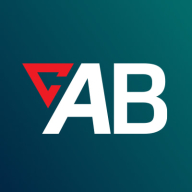

Camunda and ActiveBatch by Redwood are competitors in the process automation category. Camunda appears to have the upper hand in customization and flexibility, while ActiveBatch excels in user-friendly functionalities and efficiency.
Features: Camunda offers customization and flexibility, supporting BPMN, DMN, and CMMN standards. It has a lightweight architecture and benefits from community support and advanced API integrations. ActiveBatch stands out with robust integration capabilities, user-friendly drag-and-drop functionality, and extensive job scheduling options, making it efficient for predictable tasks.
Room for Improvement: Camunda could improve its user interfaces and documentation, enhance default UI configurations, and expand community engagement. ActiveBatch users suggest improvements in its monitoring dashboard, support services, and ease of use for beginners, alongside requests for a streamlined setup process and better training resources.
Ease of Deployment and Customer Service: Camunda supports deployment across various cloud options, including hybrids, and offers strong enterprise support but could engage better with the community. ActiveBatch provides reliable support with a challenging initial learning curve, making training essential for newcomers.
Pricing and ROI: Camunda's open-source offerings make it cost-effective initially, though enterprise support can increase expenses. ActiveBatch is valued for its comprehensive licensing model without agent fee complexities, although a shift to subscription models has led to cost reassessments. Both products deliver ROI through efficiency and development savings.
We require fewer team members to handle operations due to its robust automation.
We often need to escalate issues to level two or three for solutions related to long-standing problems.
AWS provides the best support, followed by Microsoft, and then Google.
They really understand deeply and in detailed fashion the solution.
They provide better support for the enterprise edition.
ActiveBatch by Redwood's scalability is excellent; it experiences minimal failures and outages.
Camunda offers a high level of scalability, especially when using its SaaS model, which manages and scales implementations automatically.
ECS and Fargate make horizontal scalability very easy.
They have that REST layer, REST APIs layer that makes it easy to integrate and make it part of a microservices ecosystem and APIs.
There haven't been any significant outages in my experience with Camunda.
We were not really concerned about the performance on the process itself because it was super simple, super straightforward, and it did not present itself as a bottleneck, nor did we feel it was adding additional time in the execution.
On the web console, users encounter daily activity issues where the job instances do not appear or update correctly, and they cannot view the latest logs.
I believe ActiveBatch by Redwood could be improved because the UI could be modernized.
More open documentation would be beneficial to understand the deployment process better and facilitate easier setup.
There is an issue where, in some situations, I need to scale up by observing both CPU and memory usage of containers, yet under the current options available at Amazon, this is not possible.
Since they made the move to cloud deployment in a more SaaS-oriented way, they do not invest too much in the community version.
My experience with pricing, setup cost, and licensing for ActiveBatch by Redwood has been great
AWS pricing is very competitive compared to Azure and cheap compared to Google.
There is a licensing cost for using the SaaS model and Enterprise edition of Camunda.
The addition of AI has made troubleshooting and supporting users through ActiveBatch by Redwood quicker for me.
The best feature that ActiveBatch by Redwood offers is the user interface.
EC2 makes scaling horizontally incredibly easy, especially when working under the ECS service.
Camunda's support for BPMN 2.0 is a great advantage because it allows us to have a common language to discuss technology and business in the same perspective.
The biggest difference between Camunda and Bonita might be that Camunda is simpler and more flexible for setting.
| Product | Market Share (%) |
|---|---|
| Camunda | 16.3% |
| ActiveBatch by Redwood | 1.1% |
| Other | 82.6% |

| Company Size | Count |
|---|---|
| Small Business | 11 |
| Midsize Enterprise | 13 |
| Large Enterprise | 47 |
| Company Size | Count |
|---|---|
| Small Business | 43 |
| Midsize Enterprise | 15 |
| Large Enterprise | 29 |
ActiveBatch by Redwood enhances efficiency with features like job scheduling, integration, and real-time monitoring. It supports diverse platforms, automates tasks, and offers a single-pane view with robust security.
ActiveBatch streamlines automation by offering drag-and-drop functionality, pre-built job steps, and native integrations. Its customizable workflows and alert system aid in managing complex workloads like data processing and server monitoring across hybrid environments. While it effectively reduces manual errors and enhances productivity, areas like navigation and support for cloud platforms need enhancement. New users may face challenges due to its complexity and steep learning curve, and further improvements in reporting, mobile access, and training could provide additional support to users.
What important features does ActiveBatch offer?In finance, ActiveBatch is implemented for orchestrating batch processes and data management. The healthcare industry utilizes it for automating patient data updates and server monitoring, while the retail sector benefits from file transfers and inventory management automation.
Camunda revolutionizes process orchestration by enabling seamless automation and integration with AI, human tasks, and existing systems while ensuring security and governance.
Built for collaboration between business and IT, Camunda empowers organizations to manage complexity, boost efficiency, and maintain competitive advantage. With a clientele of over 700 top organizations like Atlassian, ING, and Vodafone, Camunda is a trusted partner in designing, orchestrating, automating, and refining critical business processes to accelerate digital transformation. Its open-source nature, ease of use, and REST API integration make it a versatile choice for various needs.
What are Camunda's key features?
What benefits or ROI should users look for?
In banking, Camunda automates processes and manages transactions, while in telecommunications, it optimizes service orders. Governmental and public sectors benefit from workflow automation. Organizations often use either the enterprise edition or the open-source version to create APIs and manage business rules effectively.
We monitor all Process Automation reviews to prevent fraudulent reviews and keep review quality high. We do not post reviews by company employees or direct competitors. We validate each review for authenticity via cross-reference with LinkedIn, and personal follow-up with the reviewer when necessary.